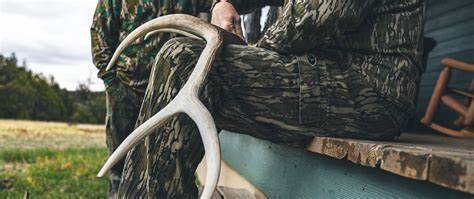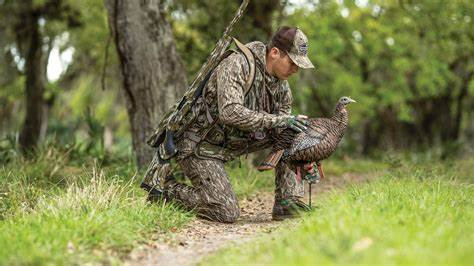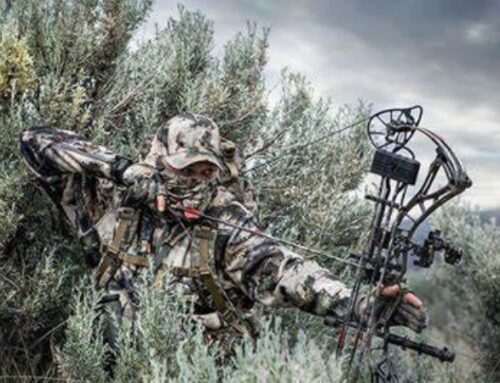Hunting in bottomland environments—swamps, floodplains, and river bottoms—demands hunting wear that can handle nature’s toughest challenges: mud, water, thorns, and unpredictable weather. Bottomland hunting pants aren’t just apparel, they’re a critical tool for comfort, concealment, and durability. Whether you’re stalking waterfowl in a marsh or tracking deer through hardwood thickets, the right pair can elevate your hunt from grueling to triumphant. In this guide, we dive deep into the top five features to prioritize when choosing bottomland hunting pants, backed by fabric specs, real-world performance insights, and expert tips to help you gear up like a pro.

1. What Are Bottomland Hunting Pants?
Bottomland hunting pants are purpose-built for the rugged, wet, and dense terrains of bottomland ecosystems. Typically crafted from advanced fabrics like polyester blends (e.g., 90% polyester/10% spandex) or nylon with Durable Water Repellent (DWR) coatings, these hunting pants balance toughness with functionality. Key features include reinforced knees (sometimes double-layered with 600D Cordura), articulated designs for mobility, and camouflage patterns like Mossy Oak Original Bottomland—a legendary mix of browns, tans, and greens mimicking tree bark and muddy undergrowth. Unlike standard hiking pants, they’re engineered to keep you dry, quiet, and hidden in the harshest lowland conditions.
2. What Are the Role of Bottomland Hunting Pants in Hunt Games?
Bottomland hunting pants are more than just legwear—they’re a game-changer in challenging environments. Here’s how they perform:
2.1 Protection from the Elements
Bottomlands are wet and messy. Pants with 3-layer waterproof/breathable fabrics (e.g., Gore-Tex or proprietary membranes) and DWR finishes shrug off rain and mud, while breathability ratings (10,000–20,000 g/m²/24h) prevent sweat buildup during exertion.
2.2 Enhanced Mobility
Articulated knees and 4-way stretch fabrics (often 8–10% spandex) allow for crouching, crawling, or wading without restriction—crucial when navigating tangled brush or setting decoys.
2.3 Concealment
The Mossy Oak Bottomland pattern, developed in 1986, uses a low-contrast, bark-like design proven to break up a hunter’s outline in hardwood forests and swamps. It’s a timeless choice for waterfowl and big game hunters alike.
2.4 Storage Solutions
Expect 6–8 pockets, including deep cargo pockets (up to 10″ x 8″) and zippered stashes, holding everything from calls to knives—keeping gear secure and accessible even when belly-crawling through mud.
3. Top 5 Essential Features of Bottomland Hunting Pants
Here’s the core of what makes bottomland hunting pants exceptional, with detailed specs to guide your choice:
3.1 Water Resistance and Breathability
- Why It Matters: Wet pants equal misery—and a noisy hunt. Water resistance keeps you dry; breathability prevents overheating.
- Specs: Look for fabrics with waterproof ratings of 10,000–20,000 mm (e.g., Gore-Tex or 4-layer polyester) and breathability of 10,000–15,000 g/m²/24h. DWR coatings add an extra shield, causing water to bead and roll off.
- Example: Drake Waterfowl’s Guardian Elite pants use a 4-layer upper/5-layer lower construction, pairing waterproofing with a soft, quiet face fabric.
3.2 Reinforced Durability
- Why It Matters: Thorns, rocks, and briars shred lesser gear. Durable pants last season after season.
- Specs: Seek 400–600D polyester or Cordura reinforcements at knees and seats, with double-stitched seams (12–14 stitches per inch). Fabric weights of 200–300 gsm balance toughness and wearability.
- Example: SITKA Harvester Pants feature a rugged polyester/spandex blend with spandex for stretch, shrugging off abrasive plants without sacrificing comfort.
3.3 Enhanced Mobility
- Why It Matters: Stiff pants hinder stealthy movement—key for closing the distance on game.
- Specs: 4-way stretch fabrics (8–12% spandex) and pre-shaped knees offer a 20–30% increase in flexibility. Adjustable cuffs (via Velcro or snaps) seal out mud and fit over boots (up to 10″ circumferences).
- Example: Mossy Oak Cotton Mill 2.0 pants blend cotton (60%), polyester (35%), and spandex (5%) for a quiet, flexible fit that moves with you.
3.4 Multiple Pockets for Storage
- Why It Matters: Hands-free gear access boosts efficiency in the field.
- Specs: Look for 6+ pockets, including cargo (8″ x 6″ or larger), zippered thigh pockets (waterproof zippers preferred), and knife-specific slots. Total capacity can exceed 1,000 cubic inches.
- Example: KUIU Attack Pants offer zippered cargo and vented thigh pockets, keeping essentials secure and ventilated during long hauls.
3.5 Camouflage Patterns
- Why It Matters: Staying unseen is the hunter’s edge. Bottomland-specific camo excels in wet, wooded areas.
- Specs: Mossy Oak Bottomland uses a 6-color palette (browns, tans, greens) with a non-reflective finish (matte sheen <5%). Patterns are digitally printed for precision blending at 10–50 yards.
- Example: Blocker Outdoors Silentec Pants in Bottomland combine stealthy camo with a noise-dampening fleece-backed fabric (sound reduction up to 30%).
4. How To Choose the Best Bottomland Hunting Pants
Picking the perfect pair means matching features to your hunt. Here’s how to nail it:
4.1 Material Quality
Look for pants made from high-quality materials like polyester or nylon with DWR (Durable Water Repellent) treatment. These materials offer water resistance, breathability, and durability. Polyester and nylon are lightweight, quick-drying, and resistant to abrasion, making them ideal for bottomland environments.
- Tip: Opt for polyester/nylon blends (e.g., 90/10 or 88/12) with DWR and membrane layers. Avoid 100% cotton—it’s quiet but soaks up water (absorbs 27x its weight vs. polyester’s 0.4x).
- Test: Rub the fabric—if it’s loud (over 50 dB), it’s a liability for close stalks.
4.2 Fit and Comfort
Ensure the pants fit comfortably and allow for unrestricted movement. Features like adjustable cuffs, elastic waistbands, and stretch fabrics enhance comfort and mobility. A proper fit is crucial for navigating through dense brush and uneven terrain without compromising your range of motion.
- Tip: Choose an athletic cut with a 32–34″ inseam for most hunters (5’8”–6’2”). Elastic waistbands (stretching 2–3″) and adjustable cuffs ensure a snug, debris-free fit.
- Test: Squat and kneel—pants should flex without pulling tight or sagging.
4.3 Camouflage Pattern
Choose a camouflage pattern that matches your hunting environment. Bottomland patterns typically feature a mix of browns and greens to blend seamlessly with the terrain. Effective camouflage is essential for remaining concealed and increasing your chances of a successful hunt.
- Tip: Match the pattern to your region. Bottomland shines in hardwood swamps; for open wetlands, consider Realtree Timber. Test visibility at 25 yards in your hunting spot.
- Test: Stand against a tree—does your outline vanish or stick out?
4.4 Storage Options
Multiple pockets, including cargo pockets and zippered pockets, provide convenient storage for essential hunting gear. Look for pants with ample pocket space to keep your hands free and your gear organized. Cargo pockets are particularly useful for storing larger items like binoculars or extra shells.
- Tip: Prioritize zippered pockets for wet conditions (YKK zippers hold up best). Cargo pockets should fit a duck call (4″ x 2″) or GPS unit.
- Test: Load pockets with gear—do they bulge awkwardly or stay streamlined?
4.5 Durability
Look for reinforced stitching and double-layered fabrics in high-wear areas like knees and seat. These features enhance the pants’ longevity and durability. Reinforced knees and seat areas protect against wear and tear, ensuring your pants can withstand the rigors of bottomland hunting.
- Tip: Check for 400D+ reinforcements and abrasion resistance (Martindale test ratings of 50,000+ cycles). Pants should survive 50+ hunts without fraying.
- Test: Drag the knee across rough bark—does it scuff or tear?

5. Final Thoughts
Bottomland hunting pants are an investment in your success.Choosing the right bottomland hunting pants is crucial for a successful hunting experience. By prioritizing features like water resistance, durability, and enhanced mobility, hunters can stay comfortable and concealed in challenging environments.
Whether you’re targeting waterfowl or big game, investing in high-quality bottomland hunting pants is essential for your gear. With the right mix of water resistance (10,000 mm+), durability (400D+ reinforcements), and stealth (Bottomland camo), you’ll tackle swamps and thickets with confidence. These aren’t just pants—they’re your shield against the elements and your cloak against wary game. Don’t settle for less; your next trophy deserves the best.
Ready to upgrade your hunt? Explore top-tier bottomland hunting pants from brands like Mossy Oak, SITKA Gear, or Drake Waterfowl at retailers like Cabela’s or direct from manufacturers like BOWINS Garment.





